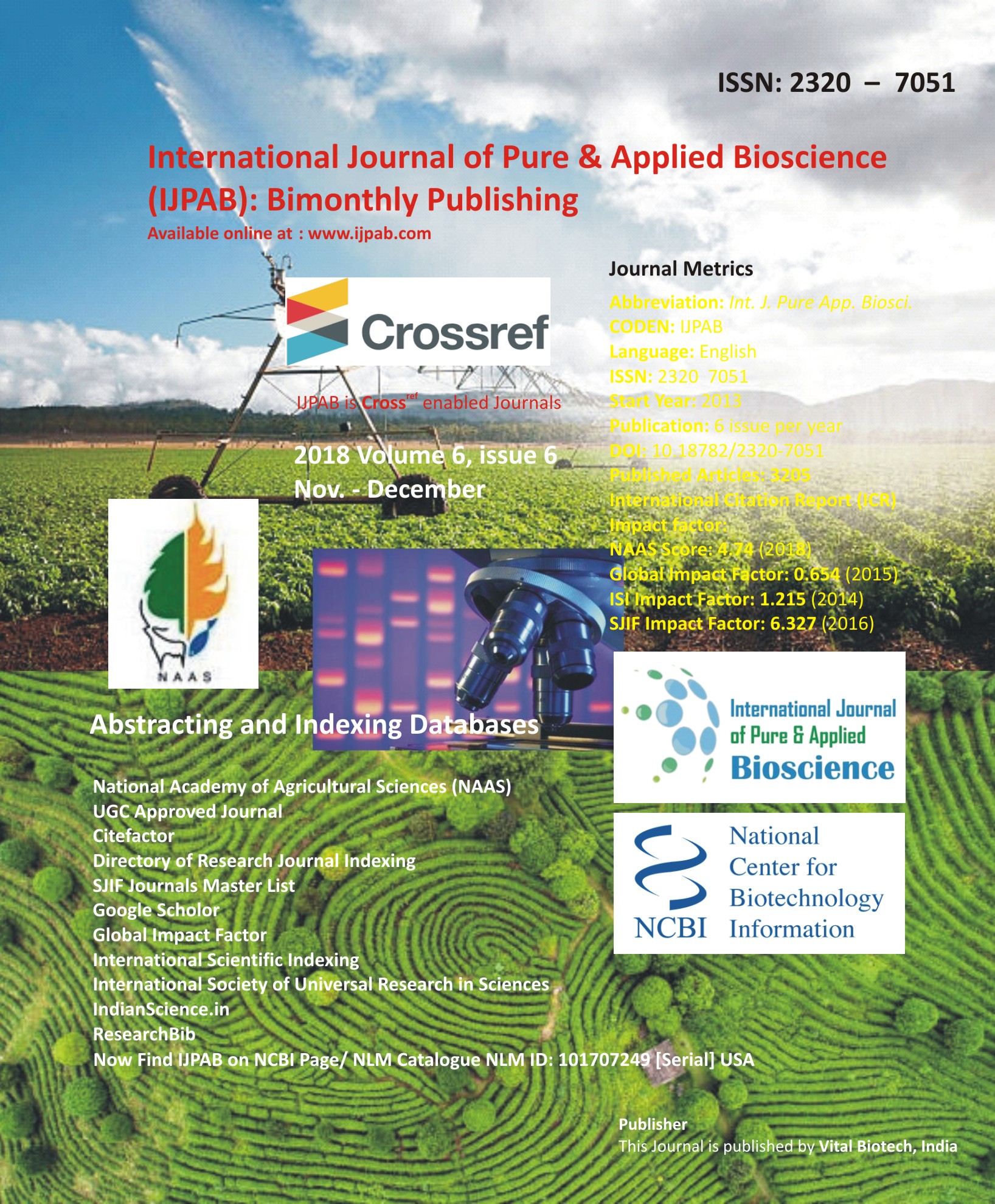
-
No. 772, Basant Vihar, Kota
Rajasthan-324009 India
-
Call Us On
+91 9784677044
-
Mail Us @
editor@ijpab.com
International Journal of Pure & Applied Bioscience (IJPAB)
Year : 2018, Volume : 6, Issue : 6
First page : (72) Last page : (79)
Article doi: : http://dx.doi.org/10.18782/2320-7051.7082
Gastrointestinal Helminths of Wildebeest (Connochaetes taurinus) in Captivity at Muyambo Park in Lubumbashi / DRC
Kasongo aseke Mukanga*, Tshikung Kambol Mosess, Tshiasuma Kedi, Kitenge Ngongo Patient
Service de Biologie Générale, Conservation de la nature et Faune sauvage, Faculté de Médecine Vétérinaire, Université de Lubumbashi B.P. 1825 Lubumbashi, R.D. Congo
*Corresponding Author E-mail: gregoire.kasongo@gmail.com
Received: 7.11.2018 | Revised: 10.12.2018 | Accepted: 16.12.2018
ABSTRACT
Several studies have been conducted for identifying and assessing according to the area, the gastrointestinal parasitic load in the wildlife. Recorded results have shown that the parasitic load varies from one area to another and from one animal to another. Furthermore, in tropical regions, climatic conditions favor the development of gastrointestinal helminthiasis in animals.
Knowing that in wildlife animals, including wildebeest (Connochaetes), living in their natural environment, the parasites frequency was reduced by the fact that pastures were large, it felt necessary to know the degree of helminthic infestation in the blue wildebeest (connochaetes taurinus) reared in captivity in a reduced space in Muyambo Park in Lubumbashi. For reaching this goal a descriptive and transversal study based upon Brumpt’s sedimentation concentration technique has been done for analyzing stools from 20 blue wildbeest (connochaetes taurinus) living in captivity. Results showed 9 nematodes and one cestode wich are rated as follows according to their prevalence: Trichostrongylus spp (22,1%), Oesophagostomum spp (18,6%), Tænia spp (13,6%), Nematodirus ssp (10,7%), Strongylides spp (7,9%), Bunostomum spp (7,1%), Schistosoma spp (5,7%), Strongylodes spp (5,2%), Haemonchus spp et Ostertagia spp (5%) et Cooperia spp (4 ,2%). 2240 eggs per gram of feces( 2240 /g) as eggs average number for approximately 1389 adult worms shows how severe is the infestation in these animals. Thus,
These results have showed a high degree of parasitism helmintic among these wildebeest resident of Muyambo Park. We suggest seasonal rotation of pastures to break the biological cycles of helminths.
Full Text : PDF; Journal doi : http://dx.doi.org/10.18782
Cite this article: Mukanga, K.A., Mosess, T.K., Kedi, T., Patient, K.N., Gastrointestinal Helminths of Wildebeest (Connochaetes taurinus) in Captivity at Muyambo Park in Lubumbashi / DRC, Int. J. Pure App. Biosci.6(6): xxx-xxx (2018). doi: http://dx.doi.org/10.18782/xxxx-xxxx.xxxx

